Hidden in Plain Sight: Some Surprising Images from Johnson & Johnson History
There’s a saying that the best place to hide something is in plain sight. Anyone who has frantically tried to find his or her keys certainly can attest to that being the case. But did you know that it’s also true for Johnson & Johnson history? Here are some surprising people and things from Johnson & Johnson history that have been hiding in plain sight.
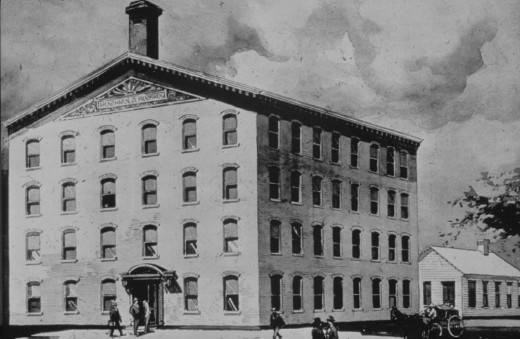
1. The first Johnson & Johnson building: the four-story former wallpaper factory rented by James Wood Johnson in 1886 played a huge part in our early history. It was where the company began operations with just 14 employees. As Johnson & Johnson rapidly grew and expanded and built more and larger buildings, that original four story building became a storehouse. While we have an artist’s rendering of the building, we're still hoping to find a good, unobstructed photograph of it. Here’s a photograph of the building from our archives that was taken long after the building was out of use and probably shortly before it was replaced. The first Johnson & Johnson building is the one all the way on the right of the photo, behind the three side-by-side 1887 Johnson & Johnson buildings.
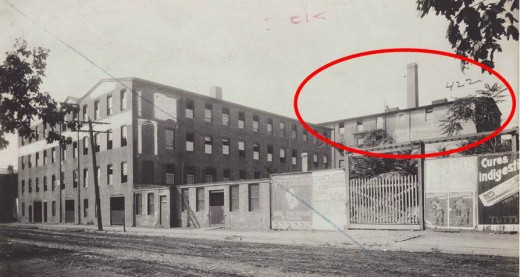
But if you look closely at some early photos of Johnson & Johnson and the surrounding area, you can see that 1886 building hiding in plain sight.
It’s here, in this section from a 1908 panoramic view of the Johnson & Johnson campus:
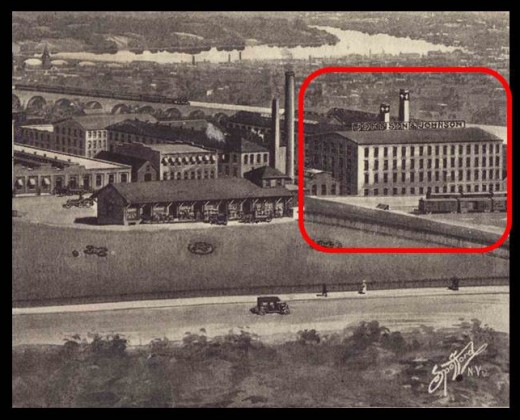
And here, in this photo of New Brunswick taken from the corner of George and Albany Streets:
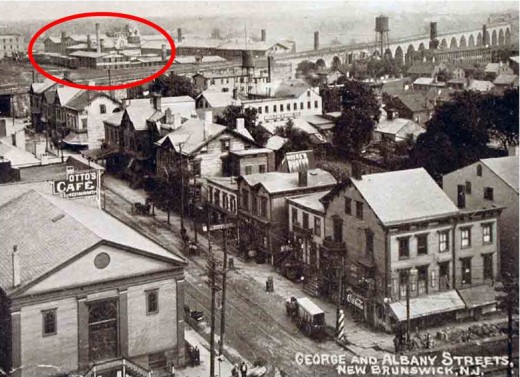
Chances are good that if you look at enough pre-1909 photos of the area bordered by George, Hamilton and Albany Streets in New Brunswick, you might find the first Johnson & Johnson building in the photos. In fact, it’s very possible that someone has a yet undiscovered photograph of our first building without even realizing it!
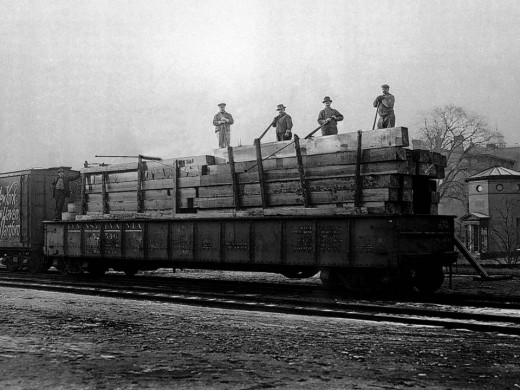
2. The old Pennsylvania Railroad Freight House: New Brunswick’s early Pennsylvania Railroad freight house also played a role in the Johnson & Johnson story. In March of 1886, James Wood Johnson wrote the first check from Johnson & Johnson. It was made out to John Ware, the Pennsylvania Railroad freight master in New Brunswick – whose family is STILL associated with Johnson & Johnson more than 125 years later. Ware worked in and around the freight house. So what did that freight house look like? It turns out it's been hiding in plain sight in the Johnson & Johnson archives!
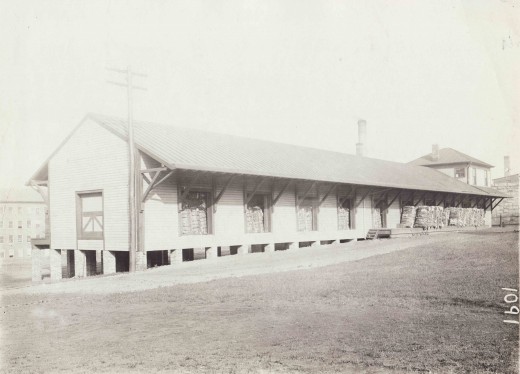
After the old wooden railroad freight house was decommissioned, it became the cotton storage shed for the Johnson & Johnson Cotton Mill. Here’s another photo of the building as a new shipment of cotton was being unloaded:
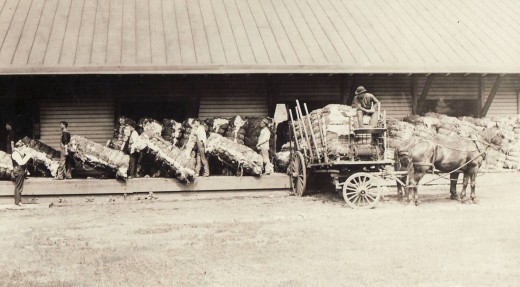
3. Fred Kilmer: Frederick Barnett Kilmer was one of the people who made Johnson & Johnson the company it is today. Kilmer was responsible for our strong early foundation in science, and he also did the company’s early communication and public outreach. He was content to stay mostly behind the scenes, but here’s an employee group photo from the 1890s, which has Fred Kilmer -- in his white lab coat, with a book under his arm -- hiding in plain sight in the front row at the far right of the photo.
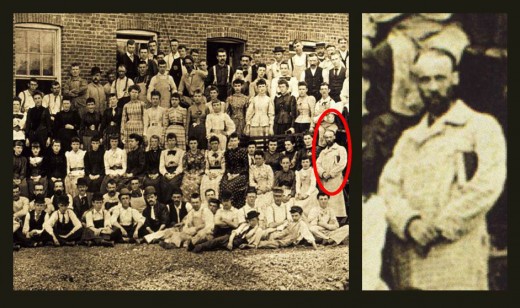
4. Robert Wood Johnson: old photographs are wonderful windows to the past, because they allow viewers to glimpse a moment from a world long gone. Here’s a window to the Johnson & Johnson past (to 1895, to be specific) with a surprise: company founder Robert Wood Johnson hiding in plain sight! He’s in the window of the office on the right. In the window to the left of him can be seen the company’s early head of sales, A.R. Lewis, meeting with a colleague. By the way, the large bound books hiding in plain sight on those 1895 office desks can be found in the Johnson & Johnson archives today.
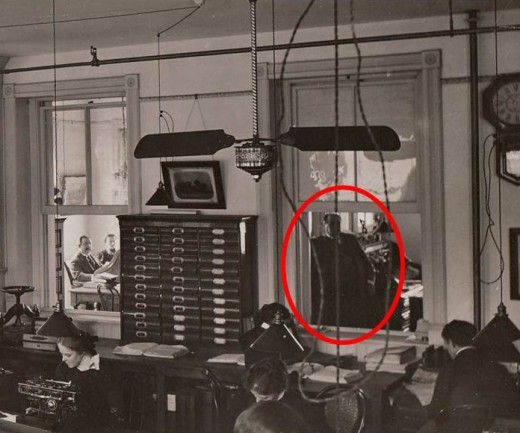
Does anyone have a piece of Johnson & Johnson history that's hiding in plain sight? If so, we’d love to see it!

Great detective work in analyzing these photographs for evidence of buildings and people! There is an amazing amount to be learned from studying the iconography of these old pictures--often a minor detail has greater importance than the main subject of the photo.
I often seek out these hidden images--here are a couple of my old posts with that kind of analysis:
http://roadtoparnassus.blogspot.com/2014/02/before-calhoun-college-old-yale.html
http://roadtoparnassus.blogspot.com/2011/09/jingling-johnny-puts-in-rare-appearance.html
--Jim
In reply to by Parnassus
@Jim, I’m glad you liked the post! It’s amazing what is often hidden in plain sight in old photographs. Thanks for sharing your posts – they are fascinating! I especially liked the one about the musical instruments.
Margaret
Thank you Margaret. I really enjoyed this and it makes me a proud employee to see how Johnson & Johnson has such deep roots in the community. Would LOVE to see the photos taken from the same spot of the same streets in New Brunswick -- and then put side-by-side to see then and now. Even shots of the "business office" then and now would be fascinating.
Very cool.
Most interesting about Kilmer ("...responsible for our strong early foundation in science, and he also did the company’s early communication and public outreach)." Imagine if he hadn't done these things, many of us might not be working for J&J today.
The fourth picture is particulary great, because it shows an instant of daily work in action at J&J in 1895.
Thanks!
Did you know there was a gymnasium "hiding in plain sight" in that group of buildings you can see in the photo taken from the corner of George & Albany Streets? There was, at least in the 1970's.